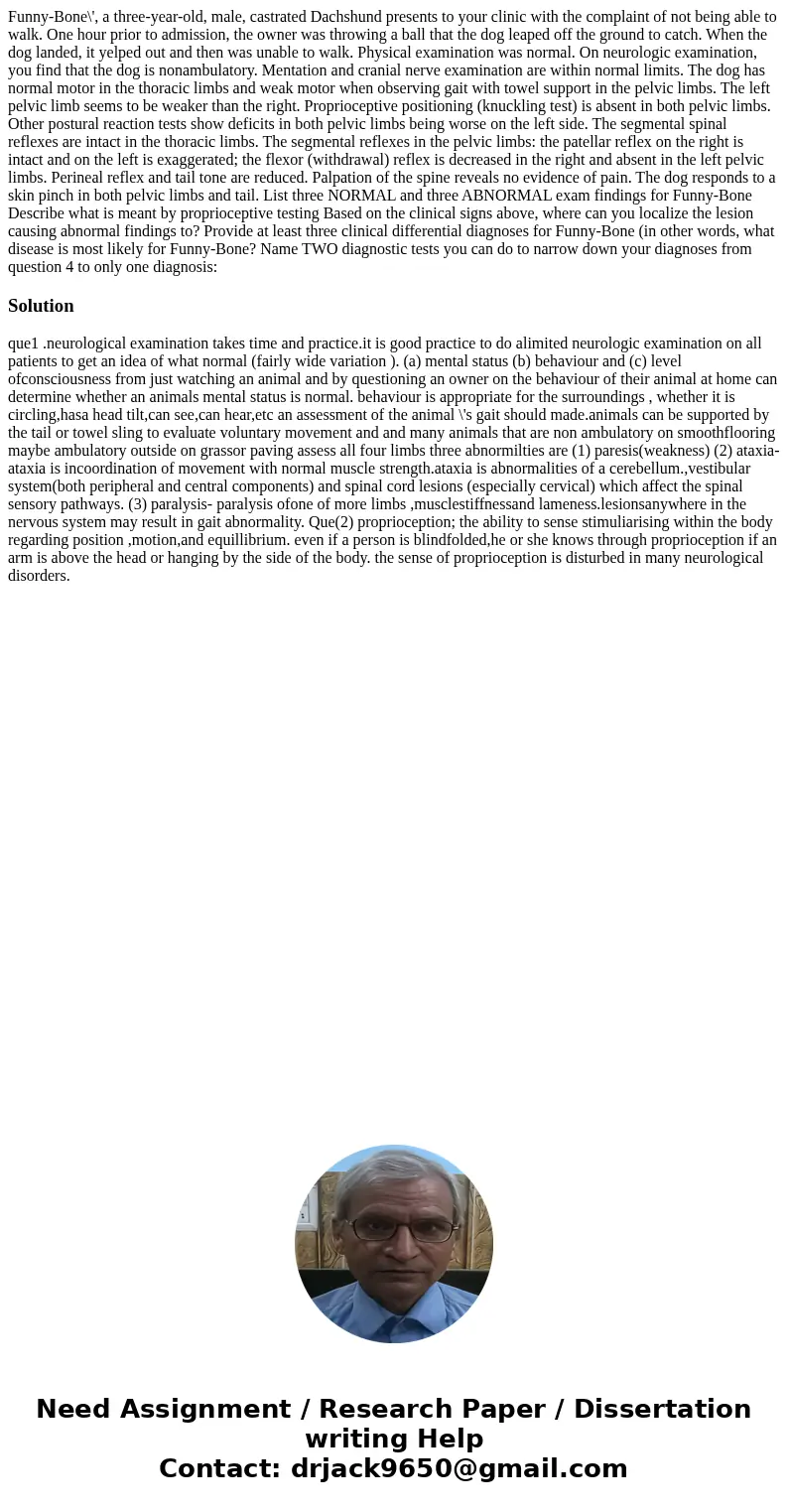Funny-Bone\', a three-year-old, male, castrated Dachshund presents to your clinic with the complaint of not being able to walk. One hour prior to admission, the owner was throwing a ball that the dog leaped off the ground to catch. When the dog landed, it yelped out and then was unable to walk. Physical examination was normal. On neurologic examination, you find that the dog is nonambulatory. Mentation and cranial nerve examination are within normal limits. The dog has normal motor in the thoracic limbs and weak motor when observing gait with towel support in the pelvic limbs. The left pelvic limb seems to be weaker than the right. Proprioceptive positioning (knuckling test) is absent in both pelvic limbs. Other postural reaction tests show deficits in both pelvic limbs being worse on the left side. The segmental spinal reflexes are intact in the thoracic limbs. The segmental reflexes in the pelvic limbs: the patellar reflex on the right is intact and on the left is exaggerated; the flexor (withdrawal) reflex is decreased in the right and absent in the left pelvic limbs. Perineal reflex and tail tone are reduced. Palpation of the spine reveals no evidence of pain. The dog responds to a skin pinch in both pelvic limbs and tail. List three NORMAL and three ABNORMAL exam findings for Funny-Bone Describe what is meant by proprioceptive testing Based on the clinical signs above, where can you localize the lesion causing abnormal findings to? Provide at least three clinical differential diagnoses for Funny-Bone (in other words, what disease is most likely for Funny-Bone? Name TWO diagnostic tests you can do to narrow down your diagnoses from question 4 to only one diagnosis:
que1 .neurological examination takes time and practice.it is good practice to do alimited neurologic examination on all patients to get an idea of what normal (fairly wide variation ). (a) mental status (b) behaviour and (c) level ofconsciousness from just watching an animal and by questioning an owner on the behaviour of their animal at home can determine whether an animals mental status is normal. behaviour is appropriate for the surroundings , whether it is circling,hasa head tilt,can see,can hear,etc an assessment of the animal \'s gait should made.animals can be supported by the tail or towel sling to evaluate voluntary movement and and many animals that are non ambulatory on smoothflooring maybe ambulatory outside on grassor paving assess all four limbs three abnormilties are (1) paresis(weakness) (2) ataxia- ataxia is incoordination of movement with normal muscle strength.ataxia is abnormalities of a cerebellum.,vestibular system(both peripheral and central components) and spinal cord lesions (especially cervical) which affect the spinal sensory pathways. (3) paralysis- paralysis ofone of more limbs ,musclestiffnessand lameness.lesionsanywhere in the nervous system may result in gait abnormality. Que(2) proprioception; the ability to sense stimuliarising within the body regarding position ,motion,and equillibrium. even if a person is blindfolded,he or she knows through proprioception if an arm is above the head or hanging by the side of the body. the sense of proprioception is disturbed in many neurological disorders.

 Homework Sourse
Homework Sourse